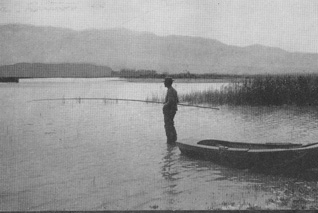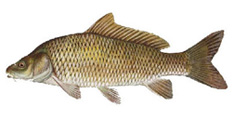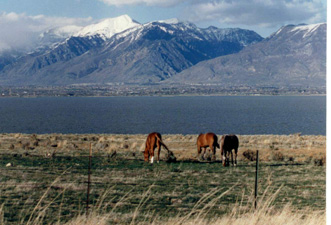Carp to be removed from Utah Lake
Endangered June sucker fish recovery program firms up water supply from federal projects.
LeRoy W. Hooton, Jr
June 29, 2008
|
When the Mormon Pioneers settled in Utah, there were 13 species of fish in Utah Lake. Over the intervening years, the native fish species have been reduced to a small number of June suckers present today. Urbanization, water diversions, agriculture, waste discharges, over-fishing and the introduction of non-native fish contributed to the reduction of the native species.
Under the authority of the Endangered Species Act of 1973, federal agencies are to undertake programs for the conservation of endangered and threatened species and prohibits them from authorizing, funding, or carrying out any action that would jeopardize a listed species or destroy or modify its “critical habitat.” This listing affects federal water projects, most notably the Provo River Project and the Central Utah Project on the Provo River, a major tributary to Utah Lake. As a condition for the completion of the Bonneville Unit of the Central Utah Project Completion Act of 1992, the Utah Reclamation Mitigation and Conservation Commission was established for the purpose of conserving and mitigating fish, wildlife, recreational resources losses caused by federal water projects in Utah.
In 1994, the U.S. Fish and Wildlife Service issued a “Jeopardy Opinion” that stated that continued operation of water projects may jeopardize the existence of the June sucker.
In 1999, nine organizations joined forces to implement JSRIP. The participants are Central Utah Water Conservancy District, Utah Department of Natural Resources, U.S. Fish and Wildlife Service, Utah Reclamation Mitigation and Conservation Commission, U.S. Department of Interior, U.S. Bureau of Reclamation, Provo River Water Users Association and Outdoor and Environmental Interest.
Salt Lake City receives water from both the Provo River Water Users Association and Central Utah Water Conservancy District through the Metropolitan Water District of Salt Lake & Sandy.
On May 22, 2008 Utah Department of Natural Resources
|
The JSRIP work plan consists of: 1) water management, 2) habitat enhancement and protection, 3) augmentation of the fish population and 4) controlling non-native fish.
Harris told the PRWUA board of directors that they are implementing the fourth task of the plan by removing 75 percent of the 7.5 to 8.8 million non-native carp from the lake over a 6 year period. This will be accomplished by netting 5 million pounds of carp per year and removing them from the lake. Carp weigh between 2 and 25 pounds, with most weighing between 5 to 10 pounds. This will require the removal of 23 tons per day over the 120 day summer season. Harris said that they are currently selecting a contractor (fisherman) and someone to help dispose of the carp. Potential uses of the disposed carp include conversion to fish meal, a protein based food for animals, fertilizer, human food, compost and bio fuels. “Nothing is off the table,” said Harris. He is hopeful that they will begin removing the carp this summer.
Introduced in the 1880s, carp are now the largest fish population in the lake, making up 90 percent of the total fish-weight. Their aggressive foraging has reduced the pondweed on the surface and plant life on the bottom of the lake, resulting in altering the ecosystem, which has made a significant contribution to the loss of the native fish species. Other non-native introduced species, such as the Walleye, are predatory to the June sucker and also have contributed to its dwindling numbers.
|
This is good news. Salt Lake City Public Utilities supports the JSRIP, which will improve the ecosystem of Utah Lake and ensure municipal water supply deliveries from the Provo River Project (Deer Creek Reservoir) and Central Utah Project (Jordanelle Reservoir).


